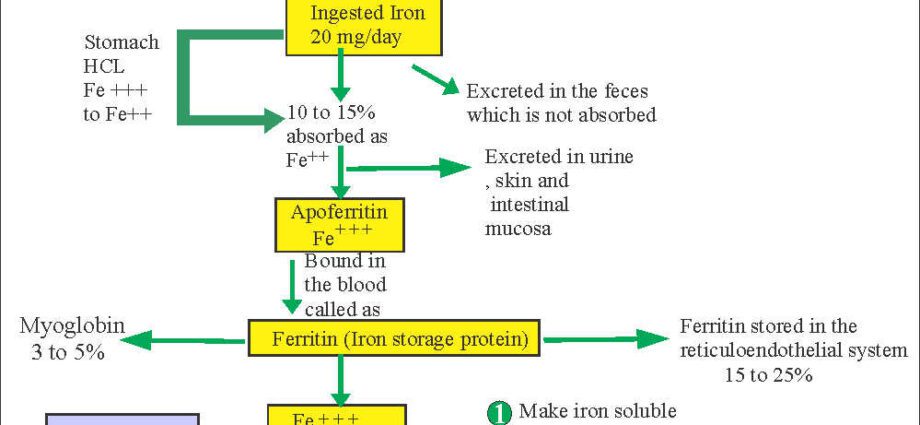Contents
Transferrin (siderophilin): analysis and interpretation of results
Transferrin is a protein produced by the liver responsible for transporting iron in the body. Its level in the blood can be observed to give information about iron metabolism.
What is transferrin
Transferrin is a protein mainly synthesized by the liver. It is also called siderophilin. It exists in many forms. The role of transferrin is to transport iron around the body. It also carries part of two other metals found in the body: zinc and copper. Its main role remains vis-à-vis the transport of iron. It therefore has two binding sites for iron atoms. It is the only protein in the body capable of transporting iron in the plasma.
The synthesis of transferrin by the liver is regulated in part by the level of the body’s iron stores. When the iron reserves are low, the synthesis of transferrin is increased to get iron in order to increase the reserves. Conversely, when iron stores are high, the synthesis of transferrin decreases because the body’s iron requirements are met. The assay of transferrin therefore makes it possible to estimate the body’s iron reserves.
Transferrin takes over iron from food as a result of its absorption by the intestine. It also plays a role in this absorption: the amount of dietary iron that can be absorbed depends on the saturation of transferrin. It ensures its transport and distribution to the place of manufacture of hemoglobin, which is partially made up of iron. Hemoglobin is a protein found inside red blood cells. Its role is to transport oxygen and carbon dioxide from the lungs to the cells and vice versa. Iron is therefore an essential element in the life of every cell in the body.
Transferrin also carries iron to the liver where it will be stored. It is then responsible for its mobilization.
Why do a transferrin test?
The transferrin assay is performed in order to estimate the body’s iron reserves. It is therefore required to assess iron metabolism. The assay of transferrin is combined with the assay of serum iron in the event of a suspected iron overload. If the desired abnormality is, on the contrary, iron deficiency (iron level too low), the transferrin dosage will not be the first examination carried out. Indeed, the main marker used will be the serum ferritin level. Transferrin will only be dosed when the result of ferritin is not representative, that is to say in a situation of pregnancy, inflammation or chronic renal failure.
The transferrin assay can also be performed to observe certain dysfunctions external to iron metabolism. For example, it will be useful for observing a liver failure, an inflammatory syndrome or even malnutrition. In this case, it will be associated with the dosage of certain proteins such as albumin.
How is a transferrin assay performed?
The transferrin assay is done from a blood sample. The blood test will be done in a medical analysis laboratory. It is not necessary to be on an empty stomach. The sample can be taken at any time of the day because the transferrin level does not vary during the day.
Before the blood test, the patient will be asked certain questions concerning the possible use of oral contraceptives, iron supplements, diuretics or hormonal treatment. In the event of known iron deficiency, this information will also be transmitted to the healthcare professional.
The results of the analysis?
The physiological levels of ferritin are as follows:
- between 1,74 and 3,64 g / L for humans;
- between 1,8 and 3,82 g / L for women.
The level of transferrin can vary physiologically. This happens when taking oral contraceptives or during pregnancy (increase of 50% during the second half of pregnancy).
Apart from these physiological variations, transferrin can vary under certain pathological conditions. Its increase may be a sign of iron deficiency (iron deficiency anemia) or bleeding. Its decrease can be associated with:
- iron overload;
- an inflammatory process;
- liver failure;
- abnormal iron losses;
- cancer ;
- malnutrition.
Treatments
Depending on the result of the dosage, the doctor may request other examinations in order to specify the pathology to be treated. If there is a problem with iron metabolism, it will indicate the treatment to follow in order to rebalance the amount of iron in the body.










